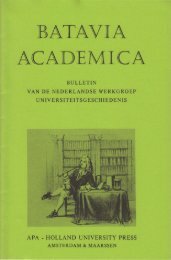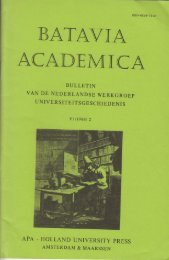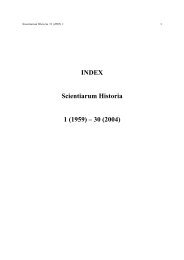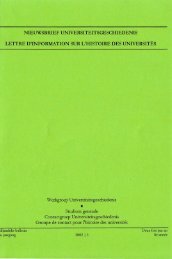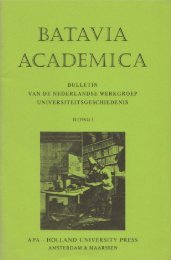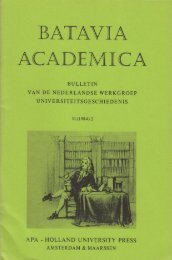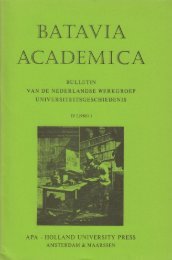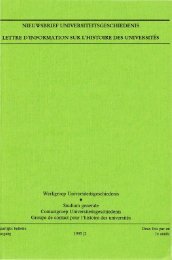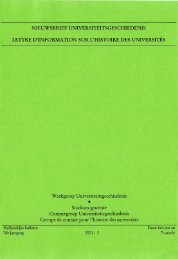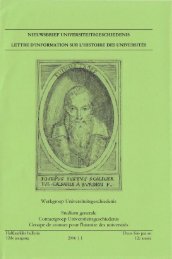the ocular harpsichord of louis-bertrand castel - Gewina
the ocular harpsichord of louis-bertrand castel - Gewina
the ocular harpsichord of louis-bertrand castel - Gewina
You also want an ePaper? Increase the reach of your titles
YUMPU automatically turns print PDFs into web optimized ePapers that Google loves.
Castel's <strong>ocular</strong> <strong>harpsichord</strong> 35<br />
At <strong>the</strong> end <strong>of</strong> each key a long elastic cord<br />
Answers to <strong>the</strong> ribbons, folded one over ano<strong>the</strong>r,<br />
And as <strong>the</strong> hand, by varying <strong>the</strong> notes<br />
Knows how to compose <strong>the</strong> sounds coming from <strong>the</strong> strings,<br />
High above each strip opens up, unfolds,<br />
And purple, green, orange and blue,<br />
Return to <strong>the</strong> eye <strong>the</strong>ir movement and <strong>the</strong>ir play.**"<br />
Both descriptions suggest that Saverien and Lemierre actually saw <strong>the</strong> instrument<br />
<strong>the</strong>y described, but we can only guess where and when <strong>the</strong>y did. Never<strong>the</strong>less<br />
both descriptions can be connected with o<strong>the</strong>r ones: Savdrien's reminds<br />
one <strong>of</strong> <strong>the</strong> letter in which Krafft was informed that Castel wanted to realize his<br />
instrument "in modo <strong>the</strong>atri comici"; Lemierre's emphasis on <strong>the</strong> part <strong>of</strong> <strong>the</strong><br />
ribbons will be encountered again with Diderot.<br />
Around <strong>the</strong> same time, in a book containing all kinds <strong>of</strong> "recreations" based<br />
on scientific experiments to amuse your family and friends (possibly <strong>the</strong> first<br />
example <strong>of</strong> this genre) <strong>the</strong> author, a certain Guyot, referring to Castel's Optique<br />
des couleurs, presented his own simplified version <strong>of</strong> an <strong>ocular</strong> instrument. It<br />
consisted <strong>of</strong> a cardbord cylinder, with a candle inside, placed in a square box<br />
having eight rectangular openings cut out in <strong>the</strong> front, corresponding to <strong>the</strong> eight<br />
notes <strong>of</strong> <strong>the</strong> diatonic scale, including <strong>the</strong> octave. The cylinder could be rotated<br />
by hand in such a way that it spiralled upwards at <strong>the</strong> same time. For a certain<br />
tune <strong>the</strong> cylinder could be provided with matching holes covered with coloured<br />
paper, such that, if <strong>the</strong> cylinder was turned round in measure with <strong>the</strong> melody,<br />
<strong>the</strong> right colours would be showing through <strong>the</strong> rectangular openings. The<br />
complete thing could even be purchased from Guyot himself; it was <strong>the</strong> most<br />
expensive item in <strong>the</strong> book. Guyot admitted that it was very simple compared<br />
with what Castel had looked for, but according to him <strong>the</strong> pleasure <strong>the</strong> instrument<br />
might be capable <strong>of</strong> would never be worth <strong>the</strong> costs. In fact, <strong>the</strong> experience<br />
with this simple model convinced Guyot "that it is far from <strong>the</strong> truth<br />
that <strong>the</strong> various chords and alternations <strong>of</strong> colours make any such impression as<br />
he [Castel] thought <strong>the</strong>y did, and that <strong>the</strong>re is no perceptible analogy between<br />
colours and sound".*' This small experiment was <strong>the</strong> last performance <strong>of</strong><br />
lemierre, Peinture, p. 70: "II eleve en buffet I'instrument argentin / Ou Part ing^nieux<br />
d'une mobile main / Interroge I'ebene et I'yvoire harmonique; / Au bout de chaque louche un<br />
long fil elastique / R^pond a des rubans I'un sur I'autre plies, / Et selon que la main par des<br />
tons varies / Sait diriger les sons que la corde renvoye, / Plus haut chaque tissu s'entrouve, se<br />
d^ploye, / Et du pourpre, du verd, de I'orange, du bleu, / Fait retentir a I'oeil le passage & le<br />
jeu."<br />
Guyot, Recreations, vol. 3, recreation nr. 52, pp. 234-240: "qu'il s'en faut de beaucoup que<br />
ces differens changemens & accords de couleurs fassent une impression telle qu'il se Test imaging;<br />
qu'il n'y a aucune analogic sensible entre les couleurs & le son". For Guyot <strong>the</strong> whole idea was<br />
destroyed by <strong>the</strong> simple counterexample that two colours mix to a new colour, but that two notes



